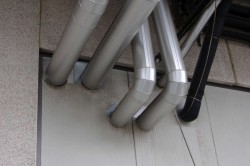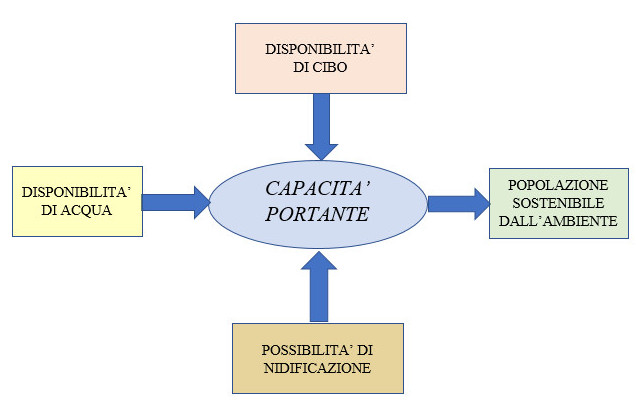Esche rodenticide: solo gli addetti ai lavori hanno compreso quello che potrebbe comportare a livello tecnico-operativo questa nuova regolamentazione che si traduce nell’uso limitato di questi prodotti.
Le etichette dei prodotti derattizzanti Biocidi oggi riportano infatti una arco temporale all’interno del quale questi prodotti possono trovare il loro impiego, dopodichè andranno integrati con altri sistemi e relazioni documentali che giustifichino i metodi di controllo delle popolazioni murine nelle aree esterne.

Questa nuova rivisitazione sull’impiego dei prodotti topicidi è stata effettuata in concomitanza con la revisione da Prodotti Presidi Medico Chirurgici a Biocidi a livello europeo e le conseguenti revisioni sulle Misure di Mitigazione del Rischio.
Non possiamo sapere in base a quali rischi effettivi si sia deciso di dare questo giro di vite a livello comunitario, visto che almeno in Italia sintomi di avvelenamento secondario conclamato su specie selvatiche (volpi,rapaci,cinghiali ecc) non siano percettibili nell’opinione pubblica e le statistiche in merito non sono di facile accesso.
Per avvelenamento secondario si intende l’intossicazione di animali non target causata dall’ingestione di roditori avvelenati.
Ricordiamo che esiste già un Ordinanza Ministeriale che limita l’uso di esche rodenticide che devono essere collocate in contenitori chiusi a chiave proprio per evitare l’avvelenamento diretto a scapito di specie non target e cani in particolare.
Non potendo entrare quindi nel merito delle scelte attuate nel Regolamento Biocidi possiamo solo prendere atto dello stato attuale e attivarci con le contromisure necessarie,al fine di assicurare un servizio di derattizzazione efficiente e sicuro per il Cliente e l’Ambiente.
Il primo passo che dobbiamo fare sarà quello di mettere nero su bianco un parere obiettivo, considerando il contesto ambientale in cui insiste il sito produttivo,ossia se questo sia inserito in ambiente rurale,semirurale od urbano e quindi definire la capacità portante* dell’area in cui ci troviamo, intesa come capacità di fornire acqua,cibo e possibili nidificazioni che l’ambiente è in grado di offrire ai roditori.
Andremo quindi a concentrarci su alcuni aspetti e tra i piu’ comuni possiamo elencare la vicinanza a corsi d’acqua, campi coltivati,allevamenti, campi incolti,zone boschive ecc.

Area esterna con zona depuratore e torrente a pochi metri dallo stabilimento
A questo punto definiremo un livello di rischio in base al quale inquadrare la possibilità delle specie murine di insistere sul sito produttivo nelle aree esterne e quindi di conseguenza sul rischio di intrusione nelle aree interne qualora queste siano piu’ o meno facilmente accessibili ai roditori.
Documentare tutto quanto sia possibile fare per migliorare l’impermeabilità della struttura all’accesso dei roditori ossia assistere l’azienda con tutti quei consigli ed osservazioni che è possibile attuare per impedire l’accesso dei roditori.
Leggi anche il nostro precedente post dedicato a questo aspetto.
Il parere del disinfestatore è essenziale in questa fase in quanto chi fà questo lavoro ha un punto di vista privilegiato e conosce le abitudini comportamentali dei roditori e la loro capacità penetrativa.

Tubi correttamente sigillati
La fase successiva riguarderà l’analisi statistica dei consumi di esca e dell’attività dei roditori nelle aree esterne registrata nel corso degli ultimi anni,in modo da avere dati storici di supporto al sistema di gestione dei servizi di derattizzazione che andremo ad effettuare.
La reportistica elaborata dal nostro software è stata concepita proprio per questo ed è in grado di generare un Foglio di Calcolo in modo da poter restituire dati e fornirci, per esempio, quali postazioni siano state maggiormente visitate negli ultimi 12-24-36 mesi.

La schermata dove effetuare i download dei vari report che si vogliono visualizzare: grafici,pdf, e fogli di calcolo di tutti gli anni in cui e’ stato erogato il servizio
Una statistica elaborata negli USA ha individuato che circa il 10% degli erogatori di esca esterna viene visitato dai roditori in maniera continuativa e questo ci può essere di aiuto per andare a definire le tecniche ed i tempi di intervento per fornire un servizio di qualità al Cliente.
Nel successivo Post accessibile cliccando qui prenderemo in esame come possiamo integrare l’uso di esche rodenticide con altre tecniche di monitoraggio e controllo dei roditori nelle aree esterne e predisporre una procedura che risponda in maniera esaustiva a quanto richiesto dalle prescrizioni attuali previste dai prodotti Biocidi
Rosi Norman
Romani Disinfestazioni Srl LUCCA Tel 0583-955344 Cell 337-1238029
Controllo Qualità
Permanent rodenticide bait: step 1
Rodenticide bait: only insiders can understand what this could lead to technical and operational level, with this new regulation which can results in the restricted use of these products.
Product labeled as Rodenticide Biocides now report a time frame within which these products can be used, then they’ll integrate with other systems and documentary reports that justify to peoples the murine control methods in the outside areas.
This new revision of the use of rat poison products was carried out in conjunction with the review of Medical Surgical Products to Biocides in Europe.
We cannot know on what real risks they decided to give this clampdown at Community level, since at least in Italy full-blown symptoms of secondary poisoning on the wildlife (foxes, birds of prey, wild boar, etc.) are not perceptible in the public opinion and statistics about that are not easily accessible.
For secondary poisoning is defined as poisoning of non-target animals caused by ingestion of poisoned rats.
Remember that there is already a Ministerial Order that restricts the use of rodenticide baits to be placed in containers locked in order to avoid the direct poisoning at the expense of non-target species, in particular dogs.
Not being able to get inside the merits of the choices made in the Biocides Regulation we can only take note of the current status and take action with the necessary counter-measures, in order to ensure an efficient service and a safe rodent control for the customer and the environment.
The first step we need to do is to put pen to paper on an objective opinion, considering the environmental context in which the production site insist, or whether it was inserted in rural areas, semi-rural or urban, and then define the carrying capacity of the area in which we find ourselves, meaning the ability to provide water, food and possible nesting that the environment is able to offer to rodents.
So we’re going to focus on some aspects of the most common we can list: the proximity to rivers, farmlands, farms, fallow fields, wooded areas and so on.
At this point we’ll define a level of risk based on the ability of murine species to insist on the production site, in the outer areas and so consequently the risk of intrusion into inland areas where these are more or less accessible to rodents.
Document everything that can be done to improve the water resistance to avoid the access of rodents to the structure and assist the company with all the recommendations and observations that can be implemented to prevent the access of rodents. Read also our previous post dedicated to this.
The opinion of the exterminator is essential at this stage because those who make this work has a privileged point of view and knows the behavioral habits of rodents and their penetrating power.
The next phase will concern the statistical analysis of bait consumption and activity of rodents in outdoor areas registered over the past years, so you’ll have historical data support to the rodent control service management system we’re going to do.
The reports drawn up by our software is designed just for this and is able to generate a sheet of calculation in order to return data and request, for example, such stations have been most frequently visited in the last 12-24-36 months.
A statistic developed in the US has identified that approximately 10% of external bait dispensers is visited by continuously rodents and this can be of help to define the technical and response times to provide a service of quality to the Customer.
In a later post we will examine how we can integrate the use of rodenticide baits with other rodent, monitoring and control techniques in the outdoor areas and provide a procedure that responds comprehensively to the requirements of the current presciption included in the Biocidal Products
Rosi Norman
<a href=”https://www.linkedin.com/in/normanrosi/”><img class=”size-full wp-image-6229 alignleft” src=”http://www.romanidisinfestazioni.com/wp-content/uploads/2017/12/Rosi_Norman.jpg” alt=”rosi_norman” width=”100″ height=”100″ /></a>
<a href=”https://www.linkedin.com/in/normanrosi/”><img class=”size-thumbnail wp-image-6238 alignleft” src=”http://www.romanidisinfestazioni.com/wp-content/uploads/2017/01/LINKEDIN-100×32.jpg” alt=”linkedin” width=”100″ height=”32″ /></a>
Romani Disinfestazioni Srl LUCCA Tel 0583-955344 Cell 337-1238029
<a href=”mailto:qualita@romanidisinfestazioni.com” target=”_blank”>Controllo Qualità</a>


